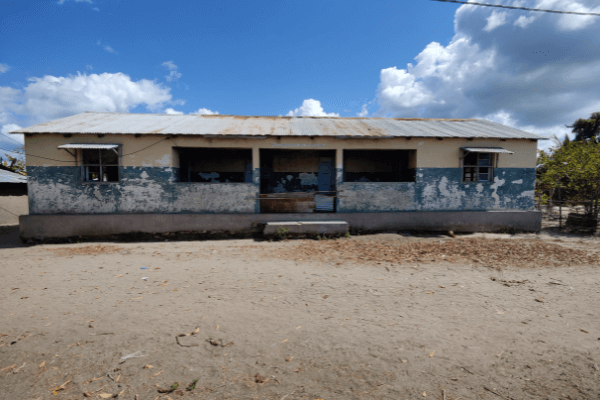Reconstruction Aid after Terrorist Attacks
Cap Anamur has been operating in Mozambique again since 2022. There, we are providing reconstruction assistance for two medical facilities that were destroyed during attacks by jihadist groups over the past three years.
The country suffers from poverty, natural disasters and terrorist attacks
Mozambique is one of the countries in Africa that is constantly struggling with conflicts, economic crises and natural disasters. The country only gained independence in 1975. Before that, it was a Portuguese colony for almost 500 years. The ensuing conflicts between the ruling party FRELIMO and the conservative government opponents RENAMO led to a 16-year civil war. This resulted in a complete economic collapse.
The political situation in the country did not stabilize until 1995. Since the beginning of the 1990s, the economic situation has also improved due to the mining of raw materials. Nevertheless, a large part of the population still lives under the poorest conditions. Since 2015, the country has again been experiencing a political crisis and has repeatedly had to deal with extreme weather events such as droughts, floods or cyclones.
In 2019, Cyclones Idai and Kenneth devastated the country’s coastal regions, resulting in a humanitarian disaster. The country has been slow to recover from this destruction despite intensive humanitarian aid, including from Cap Anamur.
Islamist violence has also shaken the country since 2015
Since 2015, Islamist attacks by the jihadist group al-Shabab have been on the rise in the north of the country. The attacks were initially directed against state institutions, and since 2019 they have increased markedly in severity. Whole areas of Cabo Delgado province were at times under the control of the Islamist groups. These brutal attacks, including on the civilian population, caused hundreds of thousands to leave their villages and towns and flee to the western regions of the northern province of Cabo Delgado.
Living conditions in refugee camps are catastrophic
In Mueda, a town 150 kilometers from the coast, about 800,000 of these internally displaced persons live in more than 40 camps. The supply situation in these camps is becoming increasingly precarious. Diseases such as cholera and malaria are spreading and the food supply is inadequate, so many people also suffer from malnutrition. The refugees want to return to their home villages, but most of their infrastructure has been destroyed by the brutal attacks of the Islamist militias. Hospitals and administrative buildings were burned down. Houses and schools destroyed.
Reconstruction of infrastructure and return of internally displaced persons
Many of the captured towns and villages in Cabo Delgado province have since been liberated. Mozambican government troops, with the help of Rwandan soldiers, were able to fight the Islamist groups. Therefore, the current goal of the Mozambican government is to return the IDPs to their home villages and towns as soon as possible.
Cap Anamur provides reconstruction aid
In order to now ensure the return of the fled people and their medical care in their home regions, Cap Anamur is dedicated to the reconstruction of two medical facilities.
Quissange Hospital
The hospital in Quissange consists of a maternity ward with waiting room, an outpatient clinic, a nurses’ residence, and a burned-down medical center. As a result of the attacks, some of the buildings have been badly damaged and all medical equipment is missing. First, the maternity ward and the inpatient area will be renovated and made usable for all medical needs on a transitional basis. During this time, the remaining buildings will then be restored. In the final step, the medical equipment of the hospital will be provided.
Health care post in Nacobe
The health care post in Nacobe is in better condition except for the burned down maternity ward. Therefore, the maternity ward building will be demolished and rebuilt. The other buildings, such as the outpatient clinic and medical staff quarters, are being cleaned and refurbished with equipment still in place. Further equipment, which is necessary for a functioning operation of the health station, is procured.
Thus, both medical facilities can be used for the foreseeable future for the care of the returning population.




